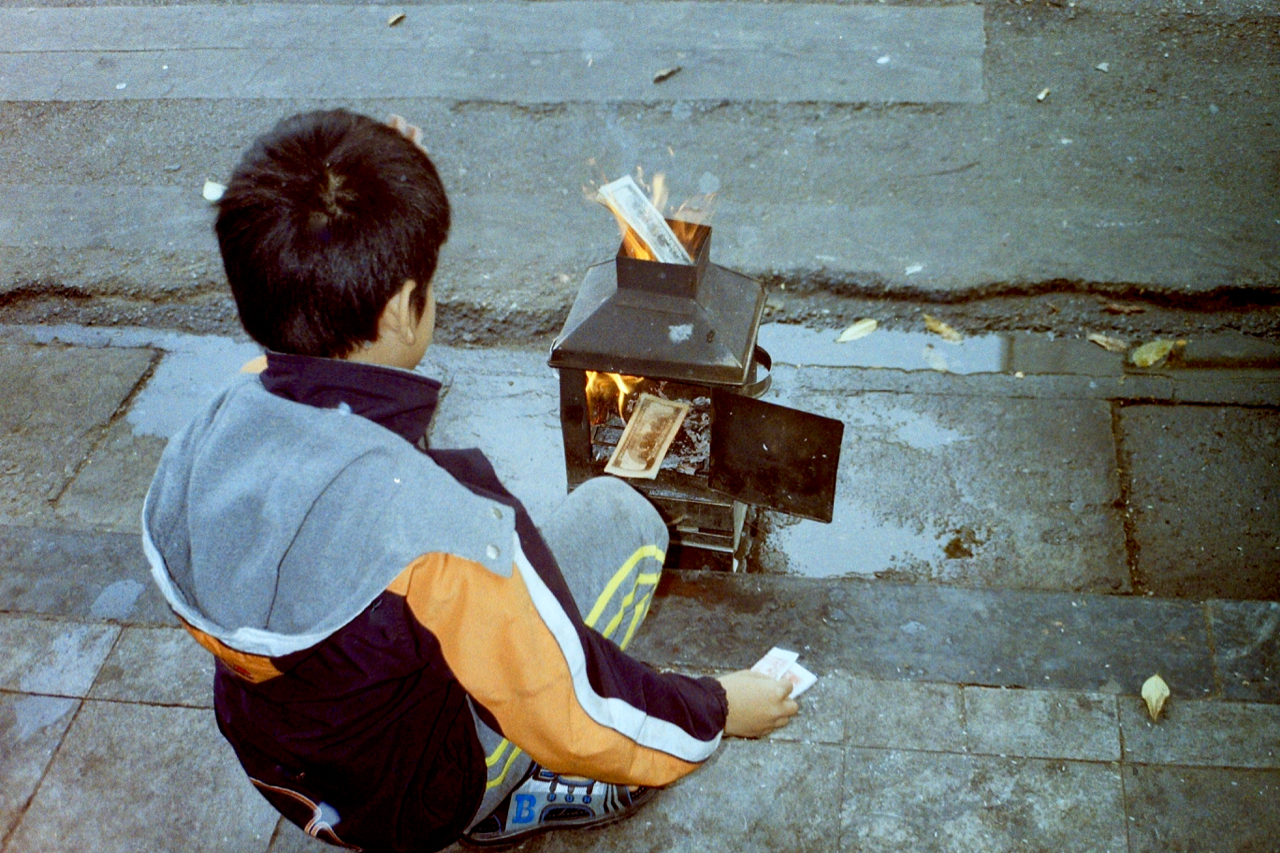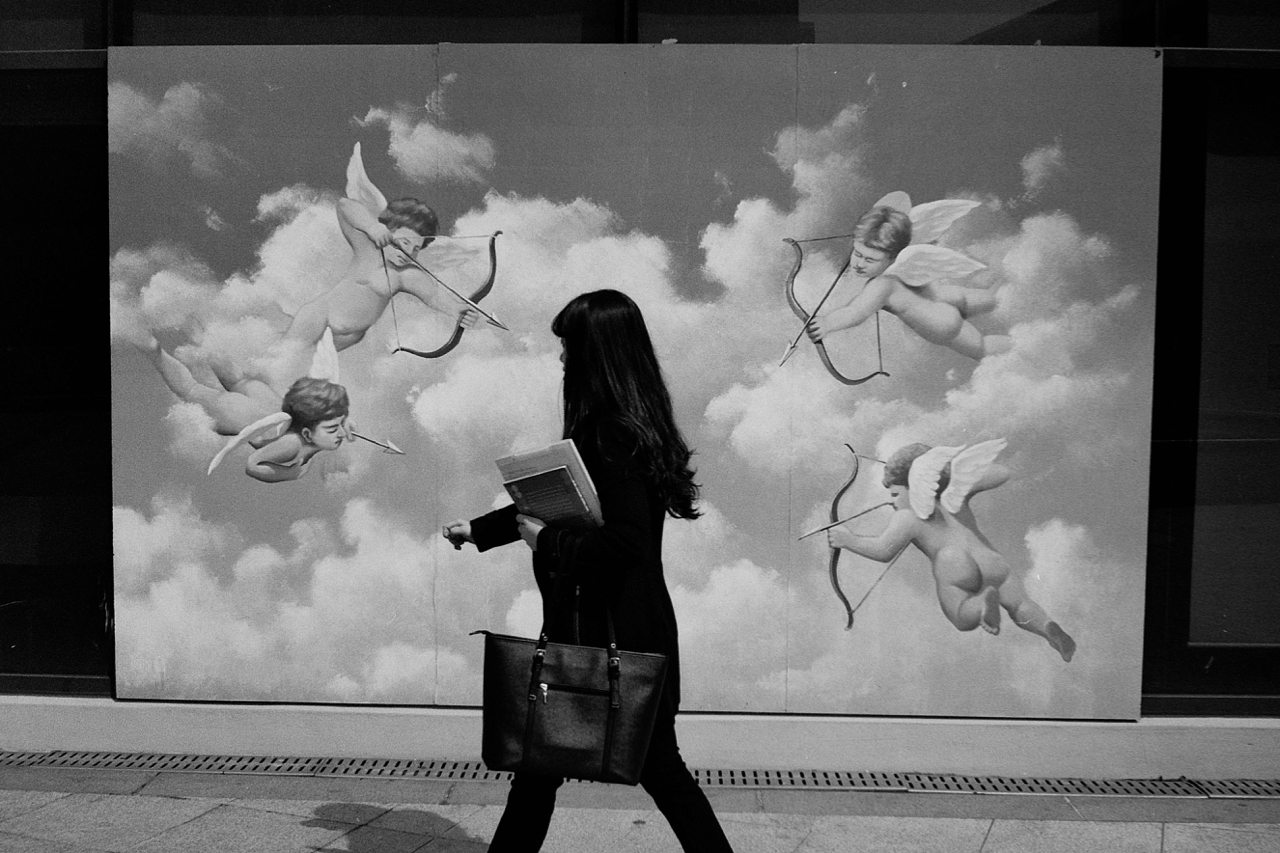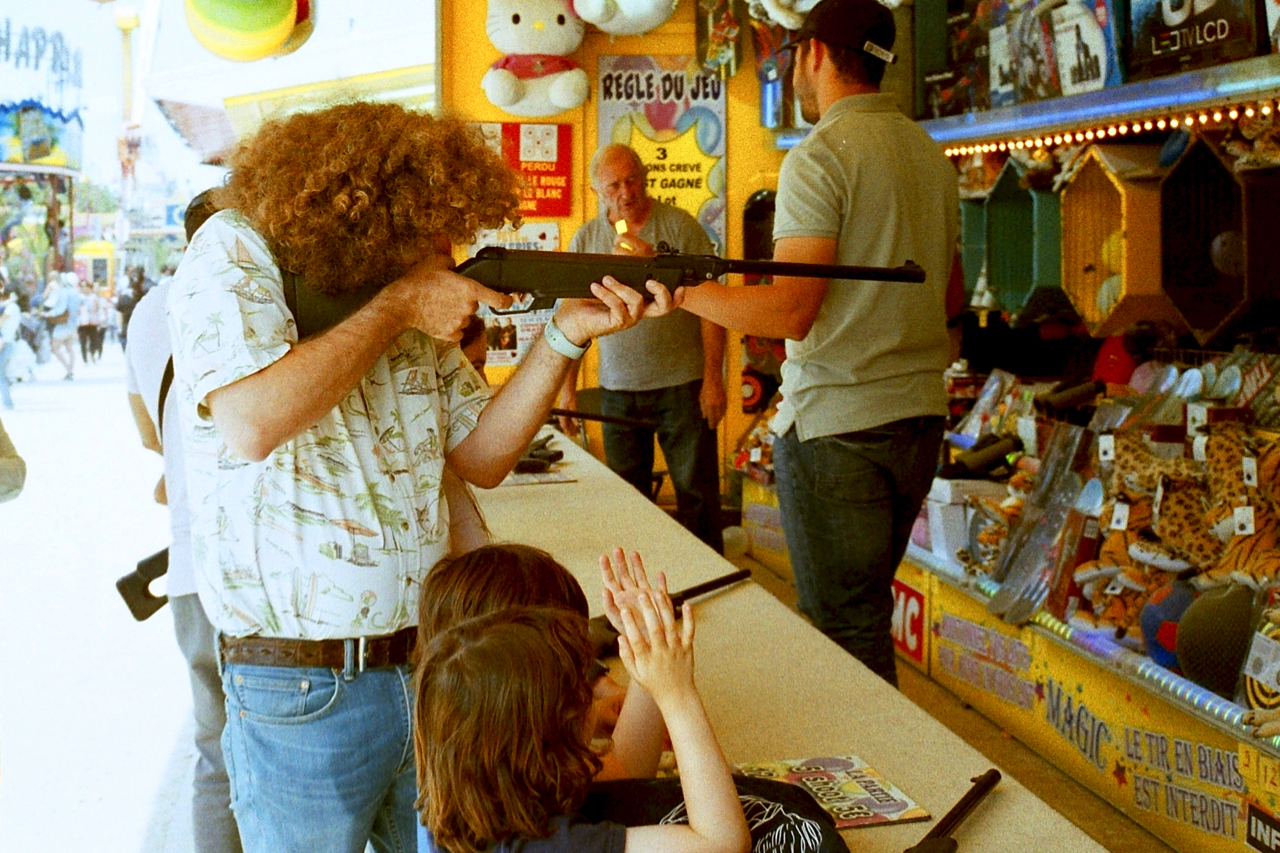Red accentuated by whiteness of snow which cakes to it like clumped frosting. A man holds a toy gun at an amusement park – his children seemingly excited about the violent game that is to ensue. A young boy with his back turned to his viewer is burning money in a lantern. These are the morosely beautiful stills of Nick Luongo.
Although Nick does not practice photography full time, his ethereal yet sombre depictions reveal his expertise in the art of the still image. Growing up in Rochester, New York, Nick left the city to study Government and Philosophy at Georgetown University in Washington. His passage towards photography was embarked upon rather late in life, again making his work even more remarkable – Nick only started snapping away in his third year of university.
He shares that, at the time, he did not have much opportunity to travel and that his third year acted as an eye opener. Experiencing dream state feelings about finding himself within a different milieu, Nick picked up a film camera and pressed down the shutter in response to this feeling. After completing his studies, Nick ventured to South Korea where he spent a year on a Fulbright grant, “a heartbreakingly beautiful place, where I had a lot of time to take photographs.”
Currently Nick is studying at Harvard Law School in Cambridge, Massachusetts focusing on International Human Rights Law and Political Theory. “At some points, especially when I returned to DC from London, my photography went rather directly to my interests in political and social theory.” This can easily be surmised by simply looking through his repertoire of work which has a strange sense of objectivity to it, I note that as it is seldom that images appear or are in fact objective depictions (as argued by Susan Sontag in On Photography as well as Andy Grundberg in Crisis of the Real – photographic depictions lack objectivity due to being created by subjective beings). Simultaneously there is a sadness connected to his images. This sadness permeates throughout, it is as though the captured individuals; objects, are devoid of human interaction, even when photographed in bustling streets or gallery spaces that depict other people, all seems in isolation from a warming touch.
“Another theme is a sense of absurdity. I suspect my photography in that way reflects my interests in theory as well. A lot of law relies on pictures of reality we know to be false. The ‘reasonable person standard’ is a good example of this: it evaluates actions against those of a mythical person who doesn’t exist and really never could, indeed against a person who, if we were to meet them, we would probably find to be manifestly unreasonable. Or take international humanitarian law. This field includes laws governing war, and one of its central precepts, called ‘the principle of humanity’, states that you can’t use weapons to inflict unnecessary suffering or superfluous injury. But necessary for what? Some state objective. International humanitarian law is as much about how states can kill as about how they can’t. And there’s something ironic about calling that ‘humanitarian’. So, law often sees life as reasonable and rule-bound. I want to say it’s not, at least not in [a] way [the] law imagines it. When I take photographs, and I see absurdity, it inoculates against abstraction, against false pictures of order and reasonableness.”




























































